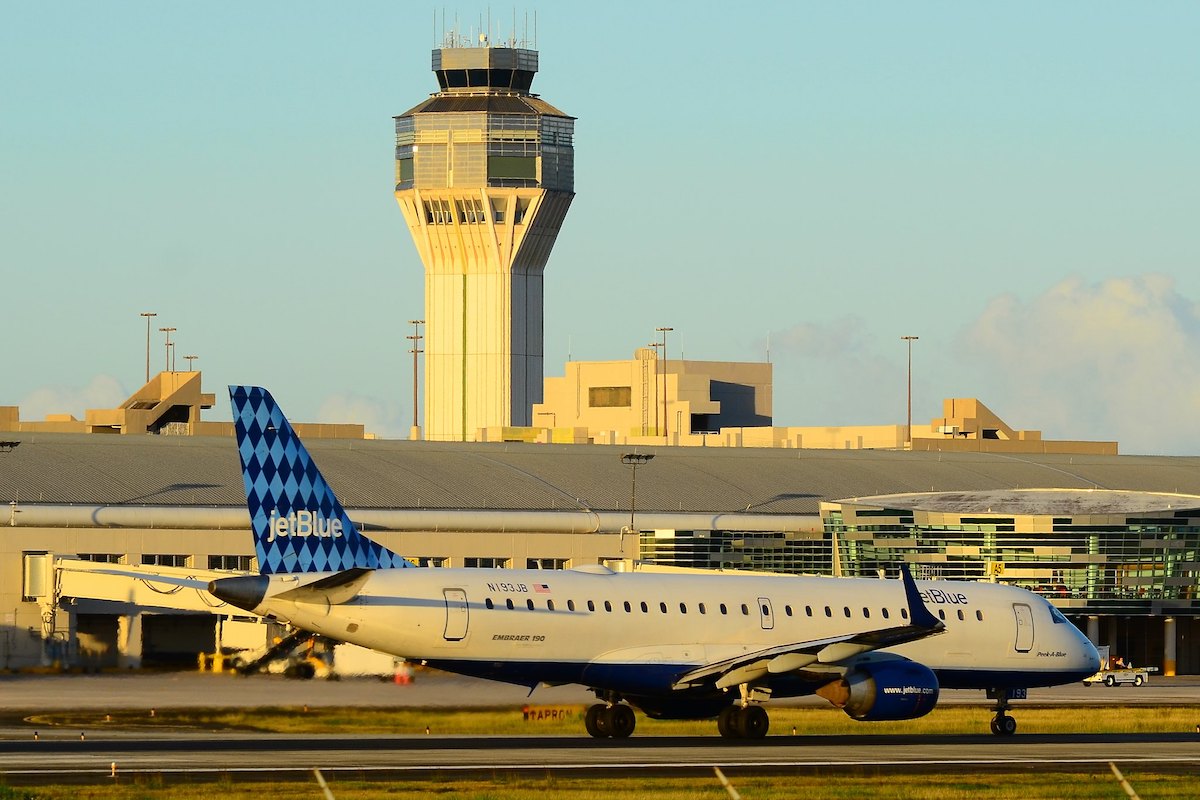JetBlue Warns of Possible Air Traffic Control Flight Disruptions This Winter

Photo Credit: Flickr / Tomás Del Coro
JetBlue Airways is bouncing back from its operational missteps this spring that forced deep cuts to its summer schedule. But that recovery may hit turbulence this winter as air traffic control issues remain a top concern for the airline.
Joanna Geraghty, president of the New York-based carrier, speaking Tuesday repeatedly cited air traffic control "constraints," including "staffing headwinds," as operational concerns this winter and into 2023. During JetBlue's third-quarter earnings call, she said the situation has forced the airline to maintain an elevated number of pilots in "reserve" — or on call — in the event of excessive delays.
"The [air traffic control] environment remains fragile," Geraghty said, even as she thanked the U.S. Federal Aviation Administration, which manages air traffic control, for its transparency on the situation.
Concerns with U.S. air traffic control staffing came to the fore this spring. That's when a shortage at the FAA's center in Jacksonville, Fla., prompted delays and cancellations to thousands of Florida bound flights. Executives at JetBlue, Southwest Airlines, and Spirit Airlines all cited the issues in April. And by the summer, air traffic control staffing was widely cited as contributing to airline operational issues in Florida and the northeast.
FAA officials have broadly denied that air traffic control has a major contributor to airline flight delays and cancellations in the U.S. this year. However, the agency has acknowledged staffing issues in Florida and the northeast — two geographies that nearly every JetBlue flight touches.
"I'm guardedly optimistic that the rest of this year should be good," FAA Acting Administrator Billy Nolen said on the air traffic control situation in September.
However, Geraghty's comments Tuesday suggested that disruptions are still a very real possibility, including during the upcoming holiday season. "We don't think this is going to course correct in the next few months," she said, adding that JetBlue is watching closely to see how the FAA handles "some of the irregular operations days."
JetBlue is on track to hire roughly 1,000 new pilots even with elevated attrition levels this year, Geraghty said. It plans to hire another roughly 1,000 cockpit crew members next year as well.
A JetBlue spokesperson did not respond to a query about the airline's operational forecast for the busy Thanksgiving and December holidays.
JetBlue, like its U.S. peers, sees strong travel demand continuing into 2023. Geraghty said the airline does not see "any cracks in underlying demand across all geographies." What's more, corporate bookings recovered to roughly 90 percent of 2019 levels by the end of the third quarter; a roughly 10 point improvement from three months earlier.
"The economy has grown significantly since 2019 but [airline] capacity has not kept up," JetBlue CEO Robin Hayes said in response to questions about the carrier's response to a potential U.S. recession. The implication was that, even if the overall economy contracts, travel still has considerable upside as it recovers to where it was historically as a percentage of economic activity.
Some of JetBlue's 2023 growth will come from the addition of a new European destination. Hayes remained mum on what city could join London on the airline's map except to say "stay tuned for an announcement in the near future."
JetBlue could slow capacity growth next year if it sees demand weaken, Geraghty added.
But concurrent supply chain issues tend to benefit JetBlue — and the entire airline industry — both if travel demand remains robust or slackens. Planemakers Airbus and Boeing are delivering fewer planes than promised, which is artificially limiting the airline recovery. JetBlue Chief Financial Officer Ursula Hurley said the carrier could take as many as seven fewer new Airbus planes in 2023 than are in its orderbook. This restricts the number of new flights JetBlue can add, whether or not its want to.
The airline is scheduled to take delivery of 18 A220-300s, six A321neos, and five A321LRs in 2023, according to its latest fleet plan. However, given Airbus' "aircraft production and delays," as Hurley put it, JetBlue expects a minimum of 14 A220s, five A321neos, and three A321LRs. It also plans to retire four A320s and six Embraer E190s next year.
JetBlue plans "mid-to-high single digit capacity growth" in 2023 compared to this year, Geraghty said. The airline will fly 1-4 percent more capacity in the December quarter than it did in 2019, after flying 0.5 percent less in the September quarter.
The airline's growth in 2023 will continue to focus on Boston and New York, Geraghty said. However, a greater amount of that new capacity will be allocated to JetBlue's other focus cities — Fort Lauderdale, Los Angeles, and Orlando — than was this year.
Hayes and other JetBlue executives said little about the U.S. Justice Department's challenge to its northeast alliance with American Airlines that is currently being tried in Boston. They remain confident in the airline's ability to win the suit.
JetBlue posted its first pandemic net profit of $57 million in the third quarter. Revenues were up 23 percent from 2019 to nearly $2.6 billion on 0.5 percent less capacity. However, costs also rose, up nearly 32 percent to $2.4 billion. Unit revenues, an indirect measure of airfares, jumped 23 percent while unit costs excluding fuel increased 16 percent.
And in the fourth quarter, the airline forecasts a 15-19 percent increase in unit revenues compared to three years ago on its modest capacity growth guidance. JetBlue anticipates an 8.5-10.5 percent increase in unit costs excluding fuel.
